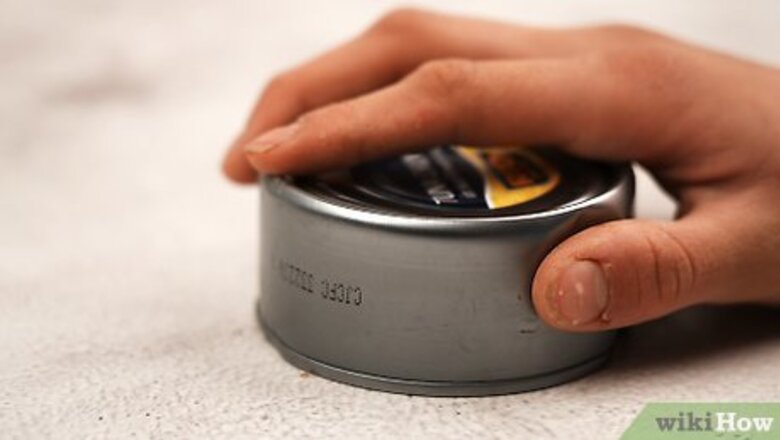
views
Opening a Can without a Can Opener
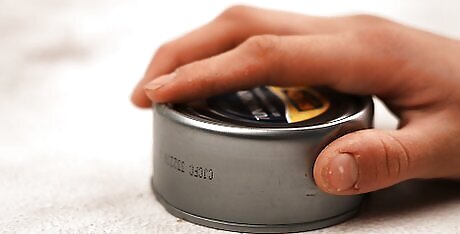
Slide the can upside down over rock or concrete. Find a flat, rough rock or piece of concrete. Turn the can upside down and rub the raised rim against this hard, rough surface, pressing down slightly while you do. If the can contains only liquid, you can keep it upright, and use the tip of a spoon to rub against a small section of the outermost groove instead, touching the raised rim of the can top.
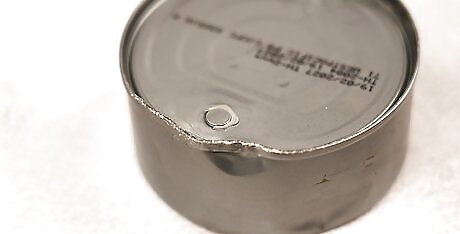
Continue until you notice moisture. Eventually, the crimped edge of the can should come apart, leaking moisture through the hole you made. When you notice this happen, turn the can right side up again.
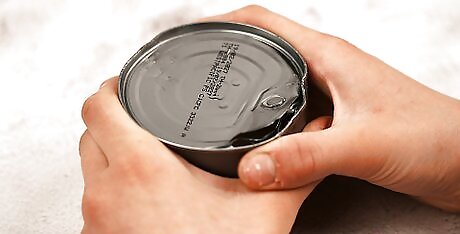
Squeeze the sides of the can. Hold the can upright on a flat surface, and squeeze the sides with both hands. Do this gently at first, gradually squeezing harder, since popping the can lid out too vigorously could cut your finger. Alternatively, whack the side of the can against a hard object. This is messier, but may keep your fingers safer. Another option is to find the hole and pry it open with a spoon, screwdriver, or other tool, working your way around the rim. Do not use a knife, as it could easily slip and injure your hands.
Using a Can Opener
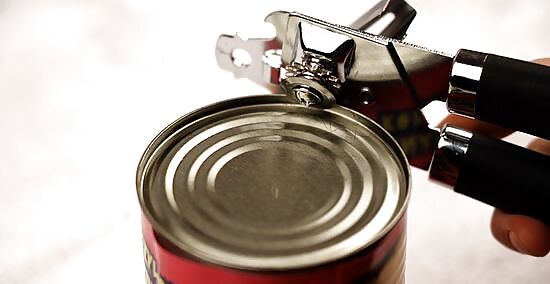
Place the toothed wheel of the can opener on the lid of the can. Set the can opener wheel onto the outer rim of the can lid. For some can openers, the wheel is designed to rest on the top of the can, in the groove next to the lip. In others, the wheel will be on the outside of the can, and a flat metal piece will rest in the top groove instead. If your opener has no wheel, see the tips section below. On some electric can openers, you will need to lift a protective flap first to reveal the wheel.
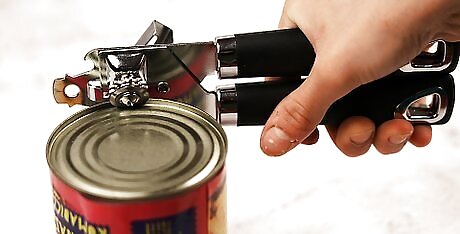
Squeeze the arms closed. If you are using a hand-operated can opener, close the arms of the can opener together tightly. You should hear a hiss or puncture noise as the wheel punches through the metal. For an electronic can opener, just hit the On button instead. Some models will even detect the can and start opening it automatically.
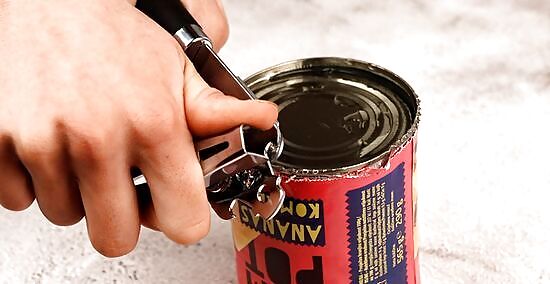
Twist the handle. Keep one hand on the arms of the can opener, holding them tight. With your other hand, rotate the bar or key handle on the outside of the can opener. This should cause the can opener to move around the entire rim of the can, with the toothed wheel cutting through the metal as it moves. You might find it easier to handle the food inside if you leave a small piece of the lid rim uncut. This allows you to use a fork to pry up the open end of the lid and bend it backward, instead of trying to dig out the lid after it's fallen into the food.
Opening a Can with Your Bare Hands
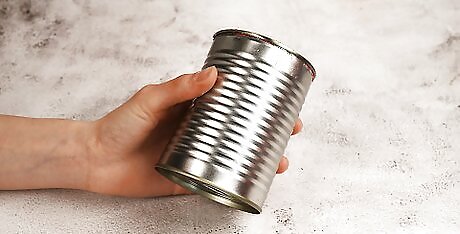
Find the grooves in the center of a large can. Modern metal cans have a series of ridges and grooves forming a ring around the center of the can. These are weak points, and can be used to rip apart the can at that location. Tear off the label if necessary to get a better look. This method will not work for small cans without grooves.
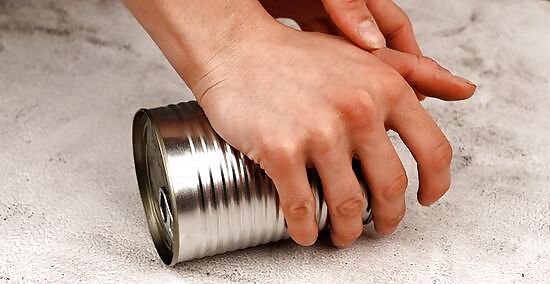
Press on the grooves to make a dent. If you have strong hands, you can grip the can on each end, then push your fingers down into the grooves. Otherwise, place the can on the ground and push down against the grooves using the heel of your hand. Keep pressing on the corners of the dent, until the dent is as wide as you can make it. Once the dent crosses, or nearly crosses, the entire width of the can when viewed from above, continue on to the next step.
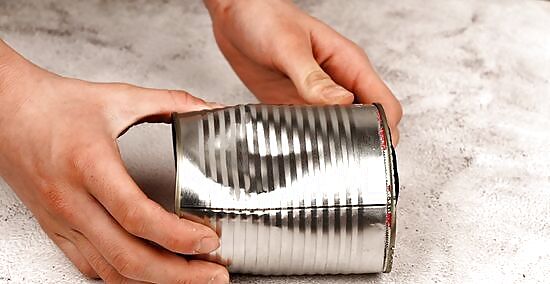
Make a dent on the opposite side as well. Rotate the can 180 degrees, so the dent is now facing downward. Repeat the same denting process on the opposite side, again pushing as hard as you can. You should now have two dents, on opposite sides of the can cylinder.
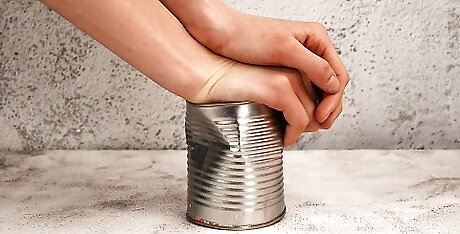
Squeeze the dents even deeper. Hold the can horizontally, then place the heel of each hand on each of the flat, circular lids. Position them so the heel is at the top of the flat area, near the rim, not in the center. Interlock your fingers together over the dented surface, then squeeze the two ends of the can together by pushing with your hands. Repeat for the other dent. If this does not work, try placing the can's flat surface on the ground, and pressing down on it with your hand or knee.
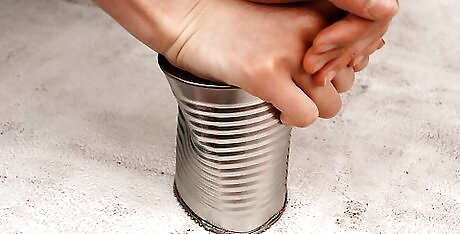
Rip the can apart slowly. You should now have a can with a major dent on each side, similar to an hourglass shape. Hold the can on both sides of the dents, then bend the two halves apart by wiggling them back and forth. You should hear a hiss as the seal breaks, and the can should come apart soon afterward.
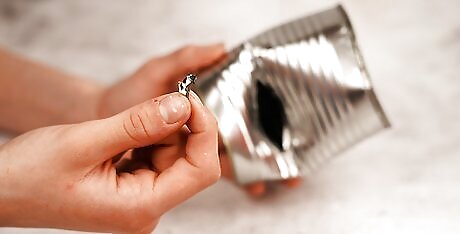
Remove metal fragments. Since you have literally ripped the center of the can to shreds, small metal pieces may have ended up in your food. Watch carefully for these so you can remove them before you eat, or throw away the food around the outer edge of the can. Spooning the food into another container without a jagged metal edge is recommended.


















Comments
0 comment